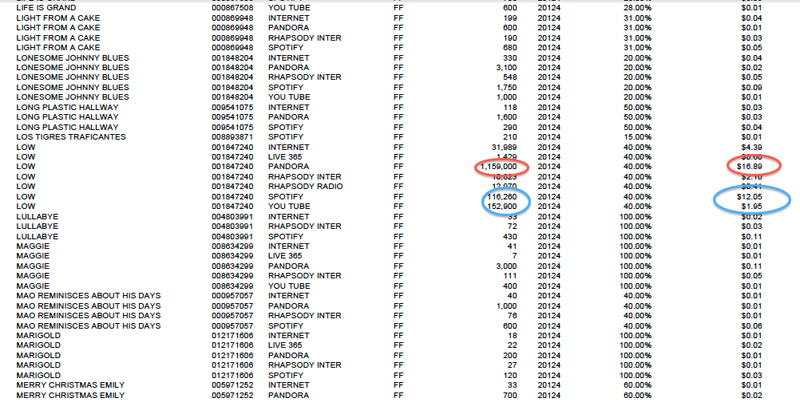
Earlier here on the blog, I featured some thoughts about streaming music and the economics behind it. It’s come up again recently, thanks to Taylor Swift pulling her music off of Spotify as a protest over the streaming rates paid, and Sony Music was reportedly evaluating whether it might do the same.
The big argument is that music sales are falling beyond even the days of rampant piracy due to streaming services like Spotify (particularly the free service). Artists and labels are arguing that the royalties paid aren’t enough all while the services are cannibalizing sales, while Spotify is noting the rapid growth of the services mean the payouts have been reaching very meaningful levels.
I’ve continued to use the streaming services as a discovery mechanism and buy songs I really like, but it’s easy to see how others wouldn’t, and how the labels and artists in turn would be hurt. Looking at my iPod, there’s very few songs that I’ve listened to 100 times. But using that round number as an example, if I paid $1.29 and listened to it 100 times, that works out to 1.29 cents per play, much higher than Spotify’s payouts per listen. As such, it requires a lot more listening to make up the money, or of course payouts will be lower.
Given the Spotify subscription price is less than the price of one album (at least in the heyday of $18.99 CDs, even if they were still $10-12 at Target and the like, or $9.99 on iTunes) per month, it’s pretty clear how the revenue drops are happening (although it can still be argued that a growing percentage, until these services existed, might not have paid anything at all due to piracy).
Whether cutting off streaming to goose sales will work for everyone, in my mind, is much murkier. There’s still a discovery experience, especially for up and coming artists, which make sites like Spotify so valuable. But if all the major stars take their music and go home, the services themselves will lose cachet for not having the biggest albums, not unlike the ongoing struggle eMusic had for so many years.
Right now the war appears to be most focused on the “free” tier; I expect the argument is that if everyone was paying, the royalties would go up, and ad-supported services likely can’t pay nearly as much for the same listener. The services are fighting the ability to only exist on the paid tier, though, to ensure a better user experience. While this is just the latest battle, it’s still quite new and a lot more will likely happen before it’s all over.